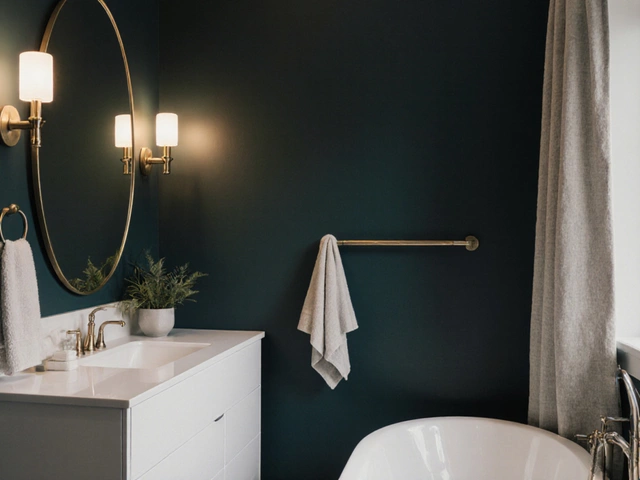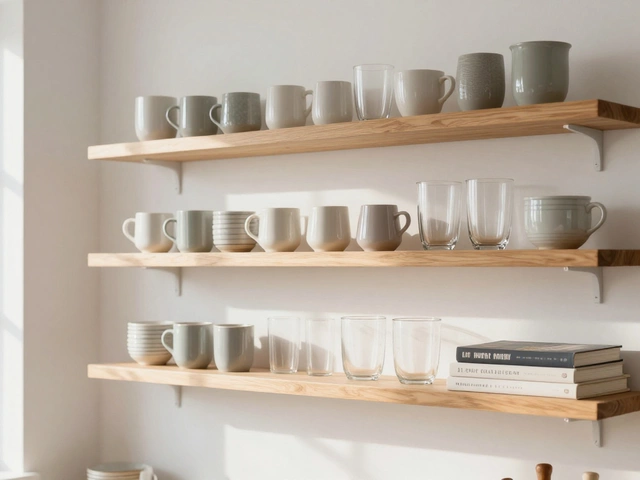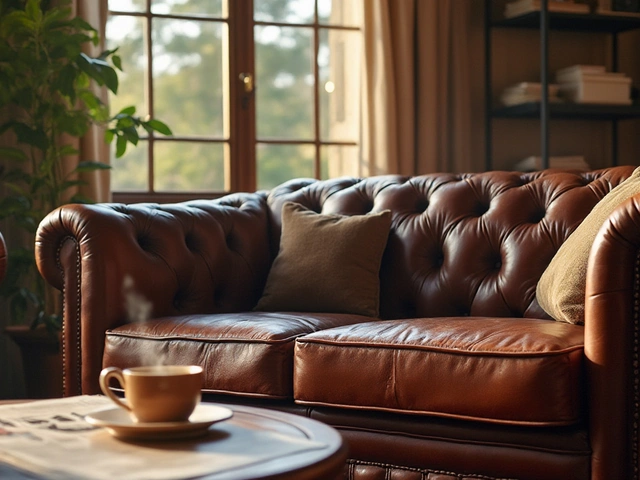What Is the Difference Between Expensive and Cheap Mirrors?
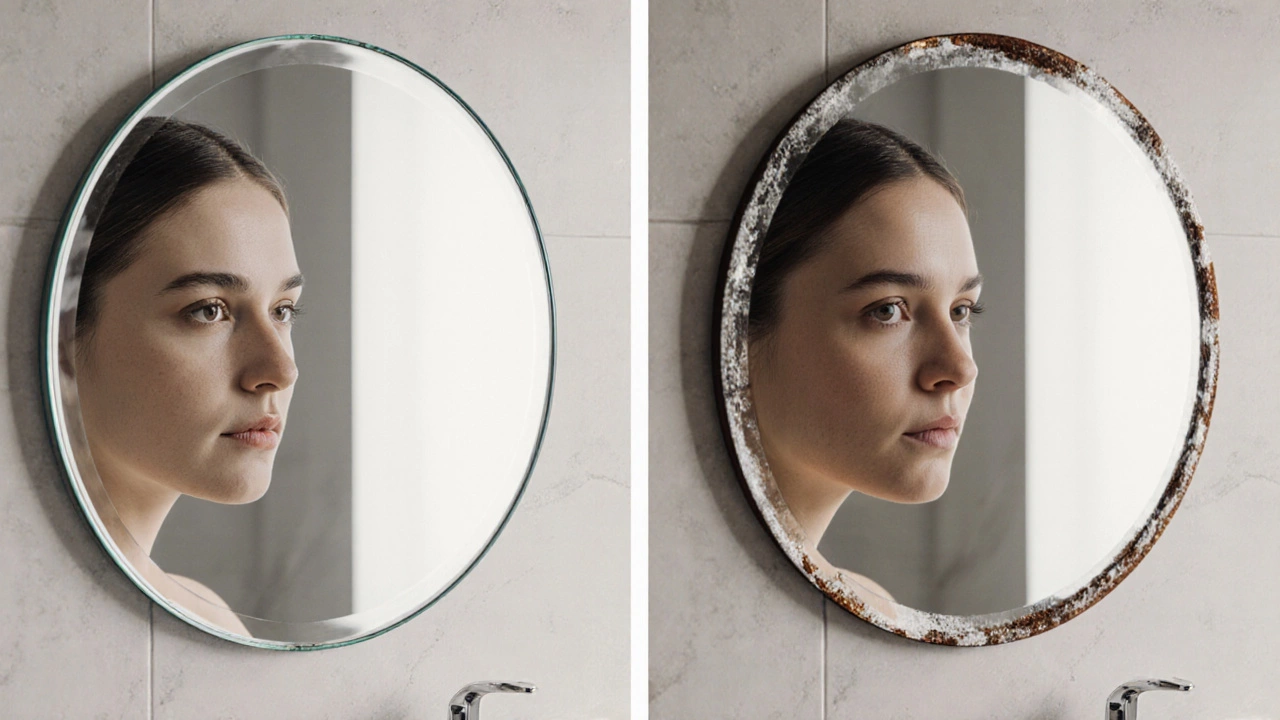
Mirror Cost Calculator
Understand the Real Value
Expensive mirrors may cost more upfront, but their longevity makes them more cost-effective over time. This calculator shows the annual cost of your mirror purchase.
Your Mirror
Typical Cheap Mirror
2-3 year lifespan
Frequent replacement needed
Your Annual Cost
$0.00
Comparison
Your mirror costs $0.00 per year versus the average $15/year for cheap mirrors.
Ever stared at your bathroom mirror and wondered why your reflection looks slightly off? Or noticed how a cheap mirror from a discount store warps your face just enough to make you second-guess your haircut? It’s not your imagination. There’s a real difference between expensive and cheap mirrors-and it’s not just about the frame.
It Starts with the Glass
The glass in a mirror isn’t just clear glass with a coating slapped on. High-quality mirrors use float glass, made by floating molten glass on a bed of molten tin. This creates a perfectly flat, bubble-free surface. That’s why expensive mirrors show you exactly how you look-no warping, no distortion, no wavy edges.Cheap mirrors? They often use lower-grade glass, sometimes even recycled or reprocessed material. That glass isn’t polished to the same standard. When you look into it, your face might stretch sideways, your nose looks longer, or your eyes seem uneven. It’s not you-it’s the glass. A 2023 study by the International Society of Optical Engineering found that low-grade glass can introduce up to 12% visual distortion compared to premium float glass.
The Silvering Layer Matters More Than You Think
Behind the glass is the reflective layer. In expensive mirrors, it’s pure silver. Silver reflects about 95% of visible light, giving you a bright, true-to-life image. It’s also more durable and less prone to tarnishing over time.Cheap mirrors use aluminum instead. Aluminum reflects about 85-90% of light, which sounds close-but in practice, it makes the image look duller, especially in low light. Worse, aluminum coatings are often thinner and applied with less precision. That’s why you see spots, cloudiness, or peeling on cheap mirrors after just a year or two, especially in humid bathrooms.
Back Coating and Protection
The back of a mirror isn’t just painted black. A good mirror has multiple protective layers: first a layer of copper, then a sealant, then a durable paint. This stops moisture from getting in and eating away at the silver. That’s why a high-end mirror in your bathroom can last 20+ years without fogging or peeling.Cheap mirrors skip the copper layer entirely. They just slap on a thin black paint. In a humid room, moisture seeps through, and the reflective layer starts to corrode. You’ll see brown spots, dark patches, or even holes where the silver has completely rotted away. This isn’t a defect-it’s a design flaw. And it’s common in mirrors sold at big-box stores or online marketplaces for under $50.
Frame Quality Isn’t Just About Looks
Yes, the frame adds style. But it also adds function. Expensive mirrors often have solid wood or metal frames that are kiln-dried and treated to resist warping. They’re attached with precision brackets or hidden mounting systems that keep the mirror perfectly flat against the wall.Cheap mirrors use MDF (medium-density fiberboard) or plastic frames. These swell in humidity, warp over time, and crack when you try to hang them. Some even come with flimsy plastic hangers that snap under the weight. I’ve seen mirrors from discount stores fall off the wall because the frame twisted and the mounting clips gave way. That’s not just annoying-it’s dangerous.
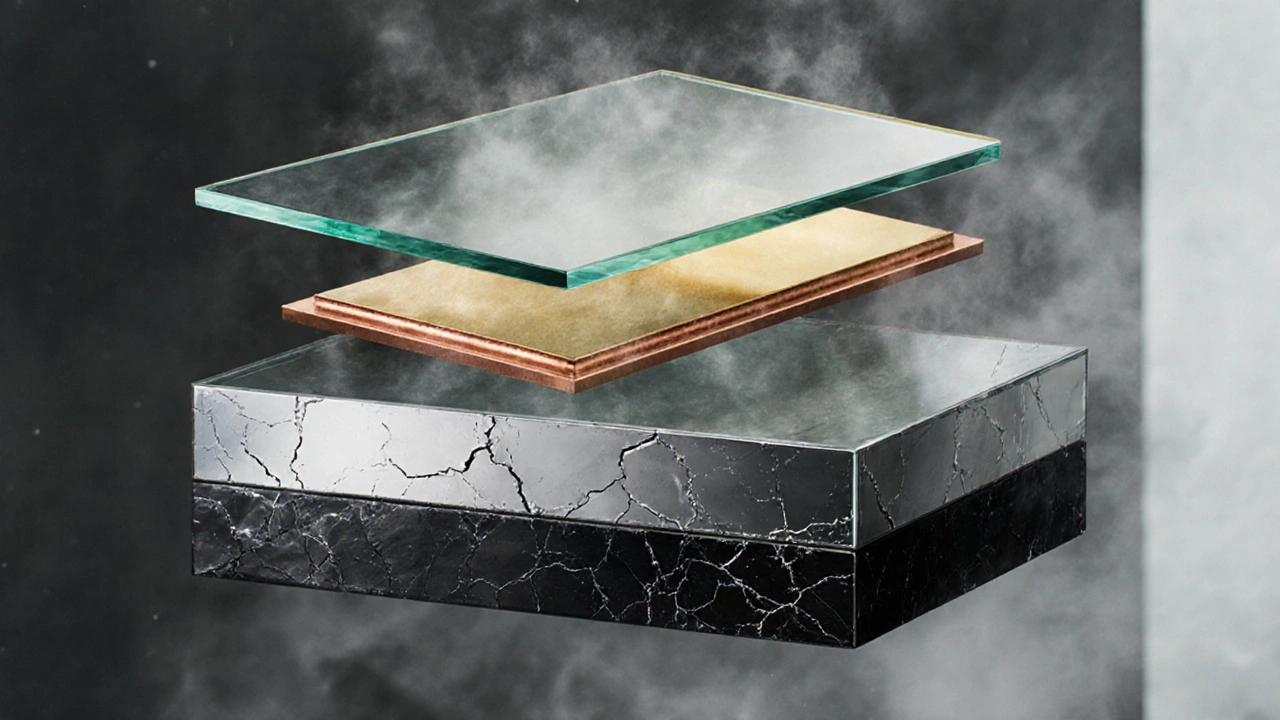
Weight and Thickness Tell the Real Story
Pick up two mirrors side by side: one from a high-end design store, one from a budget retailer. The expensive one will feel heavier. That’s because it uses thicker glass-usually 4mm or more. Thicker glass doesn’t flex, doesn’t vibrate when you close a door, and holds its shape under stress.Cheap mirrors are often 2mm or even 1.5mm thick. That’s paper-thin. It flexes when you touch it. It rattles when the washing machine runs. And if you accidentally bump it, it can crack. I’ve repaired three of these in the last year for clients who thought they were saving money. They didn’t. They paid twice.
Where You Buy Makes a Difference
You can’t assume a pricey store always sells quality. Some luxury home stores mark up cheap imports by 300%. Conversely, specialty glass shops, architectural suppliers, or local mirror artisans often sell high-quality mirrors at fair prices.Look for these signs:
- Label says “float glass” or “silver-backed”
- Weight feels substantial-not lightweight or hollow
- Edges are smooth, not rough or chipped
- Reflection is clear from corner to corner-no color tint or blurring
- Manufacturer offers a 10-year warranty on the reflective layer
One client bought a $120 mirror from a big-box store. It started peeling after eight months. She returned it, then bought a $180 mirror from a local glass workshop. Five years later, it still looks brand new. The difference? It was made with 4mm float glass, pure silver, and a triple-layer backing. The price difference was $60. The value difference? Thousands.
When Cheap Is Actually Fine
Not every mirror needs to be a heirloom. If you’re hanging a mirror in a utility room, a laundry closet, or a temporary rental space, a cheap mirror might be practical. Just know the trade-offs: it won’t last, and it won’t show you accurately.For places where you actually see yourself-bathrooms, dressing areas, entryways-invest in quality. Your self-image matters. If you’re getting ready for work, checking your outfit, or applying makeup, a distorted reflection isn’t just frustrating. It’s misleading.

What to Look For When Buying
Here’s a simple checklist to avoid being fooled:- Check the glass thickness-aim for at least 4mm
- Ask if it’s silver-backed, not aluminum
- Look for a copper layer under the backing (ask the seller)
- Hold it up to the light-no dark spots or cloudiness
- Test the reflection at an angle-no warping or bending
- Check the warranty-anything under 5 years is a red flag
Don’t be swayed by fancy frames or glowing LED lights. Those are distractions. The real value is in what’s behind the glass.
Long-Term Cost of a Cheap Mirror
A $30 mirror might seem like a bargain. But if it peels in two years, you’re paying $15 a year. A $200 mirror that lasts 20 years? That’s $10 a year. You’re saving $5 a year-and getting a reflection that doesn’t lie.Plus, a good mirror increases your home’s value. Buyers notice details. A warped, yellowed mirror in the bathroom screams “neglected.” A crisp, clear mirror says “cared for.” That’s not just aesthetics-it’s resale.
Why do cheap mirrors turn black around the edges?
That’s called “silver rot.” It happens when moisture gets behind the mirror and corrodes the reflective layer. Cheap mirrors skip the protective copper layer and use thin paint instead. Once moisture gets in, the silver breaks down and turns black or brown. This is irreversible. Once it starts, the mirror is ruined.
Can you fix a peeling mirror?
Technically, yes-but it’s not worth it. You’d need to strip off the backing, clean the glass, and re-silver it, which requires industrial tools and chemicals. Most people just replace it. The cost of repair is often close to buying a new, better mirror. Prevention is cheaper than repair.
Do all mirrors have mercury?
No. Modern mirrors don’t use mercury. That was an old technique from the 1800s. Today, all mirrors use either silver or aluminum. Silver is better for clarity and durability. Aluminum is cheaper but less stable. Neither contains mercury.
Is a frameless mirror better than a framed one?
It depends on the glass. A frameless mirror can be just as good as a framed one-if the glass is thick, high-quality, and properly mounted. But frameless mirrors are more vulnerable to edge damage. If the glass is thin or poorly made, the lack of a frame means no protection. Always check the glass specs, not just the style.
Should I buy a mirror with LED lights?
Only if you need the lighting. LED lights don’t improve the mirror’s quality-they just add illumination. A cheap mirror with LEDs still has poor glass and a weak backing. Focus on the mirror first. Then add lighting separately if you want it. You’ll get better results and more flexibility.

